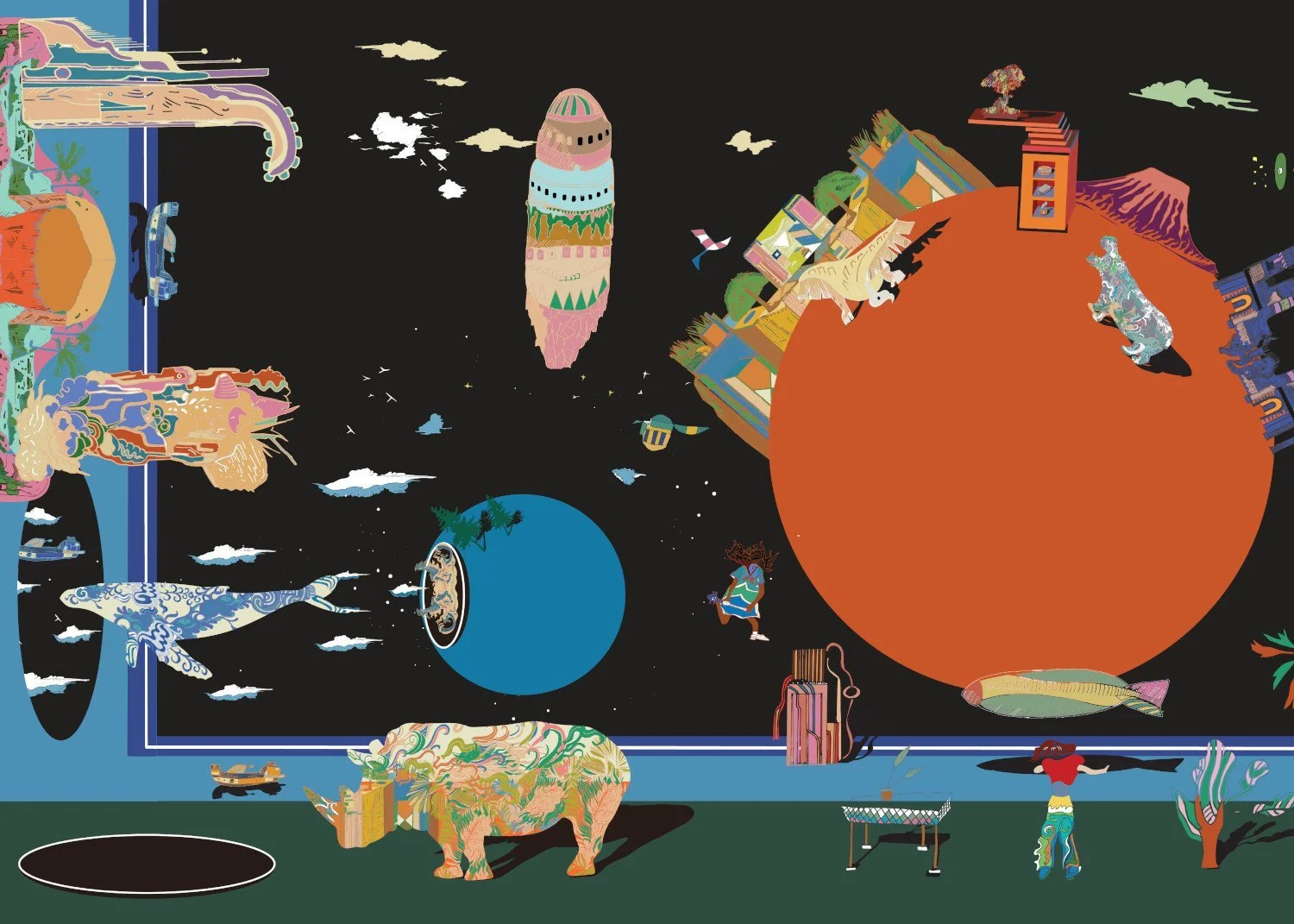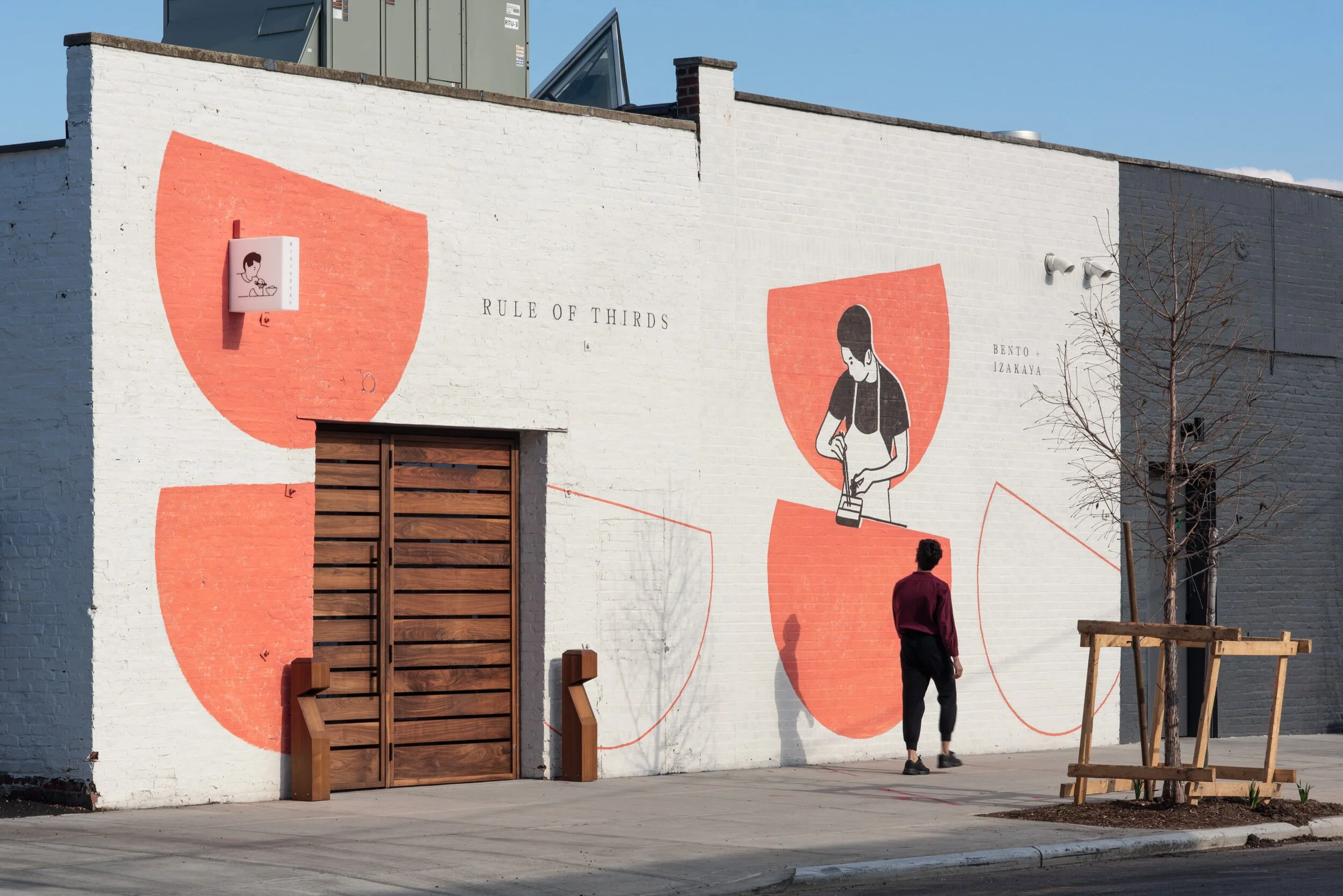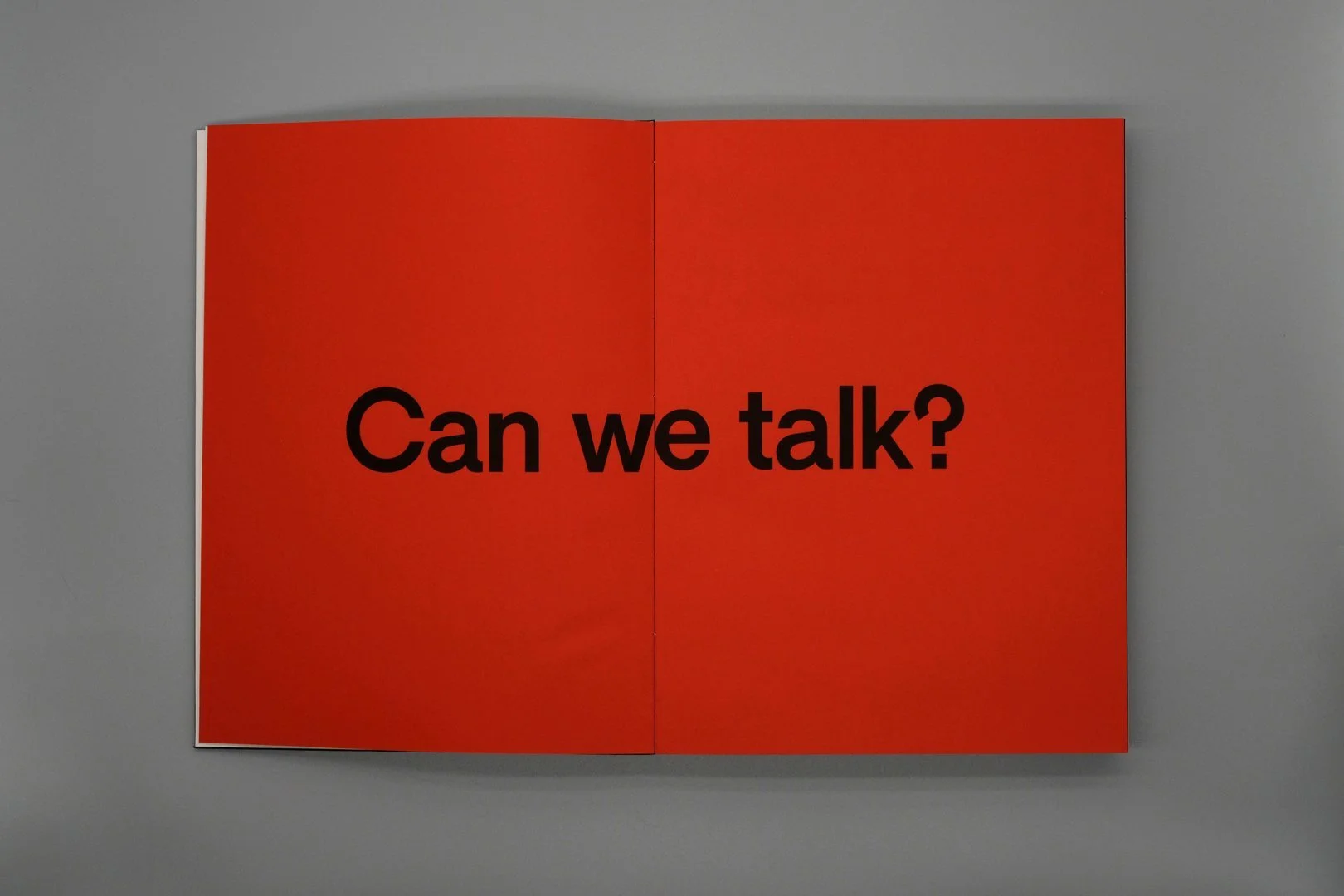10 Questions with Kyla Gu
Kyla Gu is a London-based graphic, brand, and transmedia designer with over three years of experience. Born in Guangzhou, China, she has developed a robust foundation in design principles and techniques, combined with a passion for creating impactful visual experiences. Specializing in comprehensive brand identities, she excels at crafting visual narratives that resonate deeply with target audiences.
Kyla's expertise spans multiple facets of design, including creative coding, motion design, and 3D, allowing her to explore and expand the borders of graphic design. Her proficiency in typography ensures that she effectively conveys brand messages through carefully crafted and aesthetically pleasing layouts. Additionally, her skills in motion design bring brands to life, creating engaging and immersive visual experiences.
In December 2022, Kyla completed her master's degree in Graphic Branding and Identity from The London College of Communication, UAL. During her studies, she specialized in branding creativity and expression, further honing her skills. Currently, Kyla is a graphic designer at Landor, where she continues to push the boundaries of design and innovation.
Kyla Gu - Portrait
ARTIST STATEMENT
As a graphic, brand, and transmedia designer, Kyla Gu strives to push the boundaries of visual communication. Her work is a fusion of traditional design principles and innovative techniques, where creative coding, motion, and 3D converge to form unique visual languages. This multidisciplinary approach allows her to explore and redefine the limits of graphic design.
Typography plays a pivotal role in her work, enabling her to convey brand messages with precision and aesthetic elegance. Motion design, on the other hand, breathes life into these messages, creating dynamic and immersive experiences that captivate and engage audiences.
Kyla's journey in design has been marked by a relentless pursuit of creativity and expression. Completing her master's degree in Graphic Branding and Identity from The London College of Communication, UAL, was a pivotal moment in refining her craft. Now, as a graphic designer at Landor, she continues to innovate and create, always seeking to deliver impactful and resonant visual experiences. Through her work, she aims to not only meet the needs of clients but also to inspire and provoke thought within the viewer.
The book of Turth, Book design, 210x297 mm, 2019 © Kyla Gu
INTERVIEW
Let's start from the basics. What initially sparked your interest in art and design? Did you always know you wanted to be a designer?
My interest in art and design was sparked at an early age by the vibrant visual culture of Guangzhou, China, where I grew up. The city's dynamic blend of traditional art forms and modern aesthetics fascinated me and fueled my creativity. I have always been drawn to the power of visual storytelling and the ability to communicate complex ideas through design. While I didn't always know I wanted to be a designer, I was always certain that I wanted to pursue a creative path. As I delved deeper into graphic design and discovered the endless possibilities it offered, my passion for the field solidified, guiding me toward a career in design.
You grew up in Guangzhou, China, and later moved to London, UK. How do these experiences influence your artistic perspective?
Growing up in Guangzhou, I was immersed in a rich cultural heritage that seamlessly blended ancient traditions with contemporary influences. This background gave me a deep appreciation for intricate details, symbolism, and storytelling, all of which play a crucial role in my design work. Moving to London exposed me to a diverse and vibrant creative scene where different cultures and artistic practices intersect. This duality of experiences has profoundly shaped my artistic perspective, allowing me to create designs that are both culturally resonant and globally relevant. I strive to integrate themeticulousness and symbolic depth of my Chinese heritage with the boldness and innovation of London's creative landscape.
The book of Turth, Book design, 210x297 mm, 2019 © Kyla Gu
The book of Turth, Book design, 210x297 mm, 2019 © Kyla Gu
Can you describe your typical creative process when developing a new brand identity? How do you translate a brand's message into visuals?
My creative process begins with thorough research and immersion into the brand's ethos, values, and target audience. I engage in detailed discussions with the client to understand their vision and objectives. This is followed by a brainstorming phase where I explore various concepts and visual directions. I then create initial sketches and mood boards to capture the brand's essence. Once a concept is chosen, I refine it through iterative design, focusing on elements such ascolour, typography, and imagery that align with the brand's message. The goal is to create a cohesive visual identity that not only reflects the brand's core values but also resonates with its audience on an emotional level.
What kind of sources or experiences inspire your artistic direction? Are there artists, movements, or technologies that particularly influence your work?
My artistic direction is inspired by a myriad of sources, including traditional Chinese art, contemporary design trends, and the dynamic urban landscapes of Guangzhou and London. Artists like Ai Weiwei, who blend cultural heritage with modern expression, have significantly influenced my work. Additionally, movements such as Bauhaus and Swiss design, with their emphasis on simplicity and functionality, have shaped my approach to creating clean and effective visual communication. Technologically, I'm fascinated by the capabilities of digital tools and platforms, and I often experiment with new software and techniques to push the boundaries of my designs.
Your artist statement emphasizes the importance of typography. Can you elaborate on how you use typography to elevate brand messages and create a visual identity?
Typography is a cornerstone of effective communication in design. I use typography to set the tone and convey the brand's personality, ensuring that the chosen typefaces align with the brand's voice and message. Through careful selection offonts, spacing, and hierarchy, I create a visual rhythm that enhances readability and impact. Typography allows me to add a layer of meaning to the design, making the brand's message not only clear but also aesthetically engaging. By experimenting with different typographic styles, I can create distinctive and memorable visual identities that stand out in a crowded marketplace.
Type Time, coding, digital, 2021 © Kyla Gu
On a similar note, what excites you about motion design and its ability to bring brands to life? How do you integrate it into your work? And how does it make a design more interesting?
Motion design excites me because it adds a dynamic and interactive dimension to visual storytelling. It allows brands to convey messages in a more engaging and memorable way, capturing the audience's attention through movement and animation. I integrate motion design into my work by creating animated logos, promotional videos, and interactive web elements that enhance the user experience. Motion design makes a design more interesting by introducing an element of surprise and delight, making the brand's story more compelling and easier to connect with emotionally.
You also mention pushing the boundaries in graphic design. What design rules do you like to break?
I enjoy challenging the conventional norms of symmetry and grid-based layouts. By experimenting with asymmetry, unconventional typography, and unexpected color combinations, I create designs that stand out and provoke thought.Breaking these rules allows me to explore new creative possibilities and craft unique visual experiences that capture the audience's attention. While it's important to understand the foundational principles of design, pushing the boundaries enables innovation and keeps my work fresh and relevant.
Can you share a project you've worked on that you're particularly proud of and explain what made it so impactful?
One project that I'm particularly proud of is deified, which speculates a futuristic scenario around 2032 where NFT technologies have seamlessly integrated into our everyday lives. This project was born out of the need to address the skepticism surrounding NFTs and explore digital technology's potential societal implications.
The concept behind deified is to create a brand image that represents a cult-like following in the future, where people believe in NFTs as a new societal rule. By designing a series of posters that envision a world where digital technology is worshipped as a new religion, I aimed to evoke curiosity and provoke thought about the extent to which NFTs and digital technologies can influence our lives.
In this speculative world, people believe that digital technology will dominate society, allowing for everything to be donein the digital realm, including uploading entire existences into the metaverse. The posters depict a reality where animals, plants, and even human organs are transformed into 2D data, existing solely as virtual entities. This sense of absurdity and unsettling nature created through my designs was intentional, aiming to highlight the strange and transformative impact of such a technological future.
The impact of this project lies in its ability to challenge viewers to think critically about the future of digital technology and its potential societal implications. By blending creativity with speculative fiction, "Deified" encourages people to question the trajectory of technological advancements and their role in shaping our world. This project stands out for its innovative approach to exploring contemporary issues and sparking meaningful conversations about the future.
Diefied, Poster, digital, 2022 © Kyla Gu
Diefied, Poster, digital, 2022 © Kyla Gu
Your statement mentions inspiring viewers. Can you elaborate on how you use your design work to spark thought and provoke deeper meaning? How can design make people think differently?
I aim to create designs that go beyond aesthetics and encourage viewers to reflect on the underlying messages. By incorporating symbolism, cultural references, and thought-provoking visuals, I strive to spark curiosity and dialogue. Design has the power to challenge perceptions and inspire new ways of thinking. For example, using visual metaphors and juxtaposition, I can highlight social issues or celebrate cultural diversity, prompting viewers to see the world from different perspectives. My goal is to use design as a tool for storytelling and social change, making people think more deeply about the subjects at hand.
What are some of your long-term goals as an artist and designer? What kind of design projects are you excited to work on in the future?
In the long term, I aspire to continue pushing the boundaries of graphic and transmedia design, exploring new technologies and innovative techniques. I aim to collaborate with diverse creative talents and work on projects that have a meaningful impact, such as cultural initiatives, social causes, and community-driven endeavours. I'm excited about the potential of virtual and augmented reality in design and look forward to creating immersive experiences that blend the digital and physical worlds. Ultimately, my goal is to use my skills to inspire, educate, and make a positive difference through design.
Artist’s Talk
Al-Tiba9 Interviews is a promotional platform for artists to articulate their vision and engage them with our diverse readership through a published art dialogue. The artists are interviewed by Mohamed Benhadj, the founder & curator of Al-Tiba9, to highlight their artistic careers and introduce them to the international contemporary art scene across our vast network of museums, galleries, art professionals, art dealers, collectors, and art lovers across the globe.




















